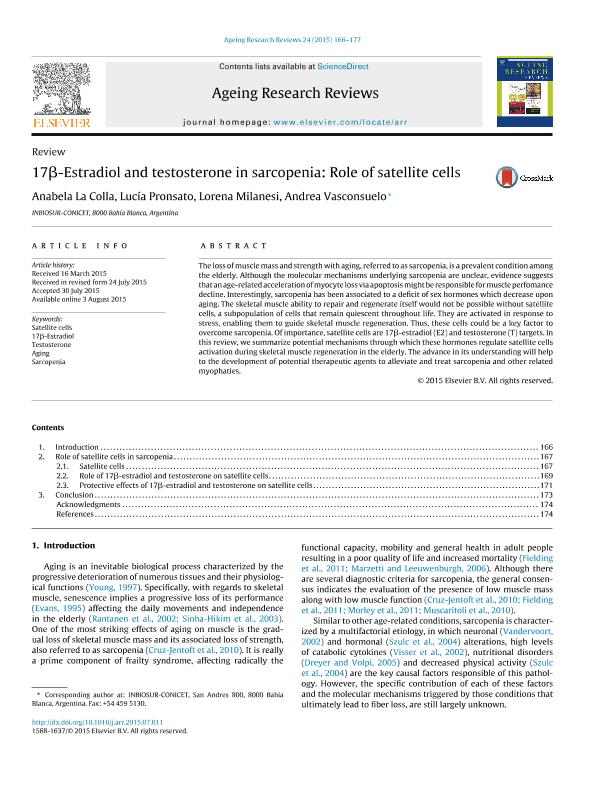Artículo
17-betaEstradiol and testosterone in sarcopenia: Role of satellite cells
Fecha de publicación:
08/2015
Editorial:
Elsevier Ireland
Revista:
Ageing Research Reviews
ISSN:
1568-1637
Idioma:
Inglés
Tipo de recurso:
Artículo publicado
Clasificación temática:
Resumen
The loss of muscle mass and strength with aging, referred to as sarcopenia, is a prevalent condition among the elderly. Although the molecular mechanisms underlying sarcopenia are unclear, evidence suggests that an age-related acceleration of myocyte loss via apoptosis might be responsible for muscle perfomance decline. Interestingly, sarcopenia has been associated to a deficit of sex hormones which decrease upon aging. The skeletal muscle ability to repair and regenerate itself would not be possible without satellite cells, a subpopulation of cells that remain quiescent throughout life. They are activated in response to stress, enabling them to guide skeletal muscle regeneration. Thus, these cells could be a key factor to overcome sarcopenia. Of importance, satellite cells are 17β-estradiol (E2) and testosterone (T) targets. In this review, we summarize potential mechanisms through which these hormones regulate satellite cells activation during skeletal muscle regeneration in the elderly. The advance in its understanding will help to the development of potential therapeutic agents to alleviate and treat sarcopenia and other related myophaties.
Palabras clave:
Satellite Cells
,
17b-Estradiol
,
Testosterone
,
Aging
,
Sarcopenia
Archivos asociados
Licencia
Identificadores
Colecciones
Articulos(INBIOSUR)
Articulos de INSTITUTO DE CIENCIAS BIOLOGICAS Y BIOMEDICAS DEL SUR
Articulos de INSTITUTO DE CIENCIAS BIOLOGICAS Y BIOMEDICAS DEL SUR
Citación
la Colla, Anabela Belén; Pronsato, Lucía; Milanesi, Lorena Magdalena; Vasconsuelo, Andrea Anahi; 17-betaEstradiol and testosterone in sarcopenia: Role of satellite cells; Elsevier Ireland; Ageing Research Reviews; 24; Part B; 8-2015; 166-177
Compartir
Altmétricas




